Introduction
Ai Bing, a beloved traditional Chinese pastry, is a culinary gem that bridges heritage and flavor. Often associated with the Qingming Festival, this vibrant green cake is crafted from mugwort—a fragrant herb renowned for its earthy aroma and health benefits. Homemade Ai Bing offers a gateway to preserving cultural traditions while delighting the senses with its soft, chewy texture and subtle bitterness balanced by sweet fillings. This article delves into the art of making Ai Bing from scratch, exploring its history, ingredients, and techniques to help you recreate this timeless treat in your kitchen.
The Essence of Ai Bing
Ai Bing’s origins trace back centuries, rooted in Chinese agricultural traditions. Mugwort, or Artemisia argyi, was historically used for its medicinal properties, believed to ward off dampness and boost vitality. During the Qingming Festival, families would gather to honor ancestors, and Ai Bing became a symbolic offering, its green hue representing spring’s renewal. Today, it remains a seasonal favorite, cherished for its nostalgic taste and connection to nature.
Ingredients: The Foundation of Flavor
Crafting Ai Bing requires a harmonious blend of fresh and pantry staples. Here’s a breakdown of essential components:
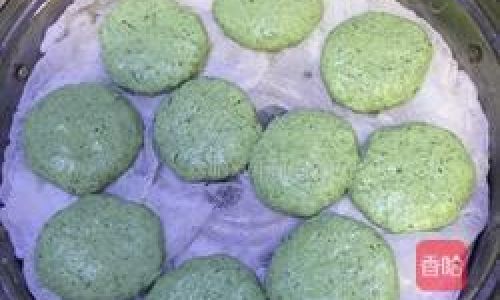
- Mugwort (Ai Cao): The star ingredient, mugwort lends its signature color and herbal notes. Opt for fresh, tender leaves for optimal flavor.
- Glutinous Rice Flour: This sticky flour creates the cake’s chewy texture.
- Rice Flour: A small amount adds structure, preventing excessive stickiness.
- Sugar: Balances mugwort’s bitterness; adjust to taste.
- Filling Options:
- Sweet Black Sesame: Roasted sesame seeds, sugar, and butter.
- Red Bean Paste: Homemade or store-bought for a classic pairing.
- Peanut-Coconut: A modern twist with shredded coconut and crushed peanuts.
- Cooking Oil: Neutral oil for greasing hands and tools.
- Optional Add-Ins: A pinch of salt to enhance flavors, or a splash of vanilla extract for depth.
Preparation: From Garden to Dough
Harvesting and Cleaning Mugwort
- Select young mugwort sprigs, avoiding woody stems.
- Rinse thoroughly to remove dirt, then blanch in boiling water for 1–2 minutes. This step softens the leaves and reduces bitterness.
- Shock in ice water to preserve color, then drain and squeeze out excess moisture.
Processing the Mugwort
- Chop blanched mugwort finely or pulse in a food processor until smooth.
- For a silkier texture, strain through a sieve to remove fibrous bits (optional).
Dough Making
- In a large bowl, combine 200g glutinous rice flour, 50g rice flour, and 30g sugar.
- Add 150g processed mugwort and 180ml warm water, mixing until a shaggy dough forms.
- Knead gently until smooth, adding water or flour as needed. The dough should be pliable but not sticky.
Filling Preparation
- Black Sesame Filling: Toast 100g sesame seeds until fragrant. Grind with 50g sugar and 30g melted butter.
- Red Bean Filling: Simmer 200g adzuki beans until tender, then mash with sugar to taste.
- Peanut-Coconut Filling: Mix 80g crushed peanuts, 40g shredded coconut, and 30g honey.
Shaping and Assembling Ai Bing
Portioning the Dough
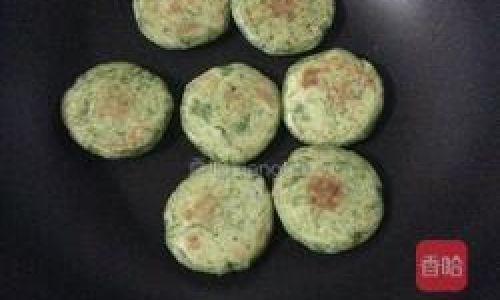
- Divide the dough into 12 equal pieces (about 40g each). Roll into balls.
- Flatten each ball into a 3-inch disc, keeping edges thinner than the center.
Filling and Sealing
- Place 1–2 tablespoons of filling in the center of each disc.
- Gently pinch the edges together, sealing the filling inside. Roll between palms to smooth.
Pressing into Molds (Optional)
- Lightly grease traditional wooden molds with oil.
- Press each sealed dough ball into the mold, then tap to release. This step imprints decorative patterns, though hand-shaped cakes are equally authentic.
Cooking Methods: Steaming vs. Pan-Frying
Steaming
- Line a steamer basket with parchment or cabbage leaves to prevent sticking.
- Arrange Ai Bing 1 inch apart, cover, and steam over medium heat for 12–15 minutes.
- Result: Soft, pillowy texture with vibrant green hue.
Pan-Frying
- Heat a nonstick skillet with 1 tbsp oil.
- Cook Ai Bing on medium-low heat for 3–4 minutes per side until golden.
- Result: Crispy exterior with a tender interior.
Tips for Perfect Ai Bing
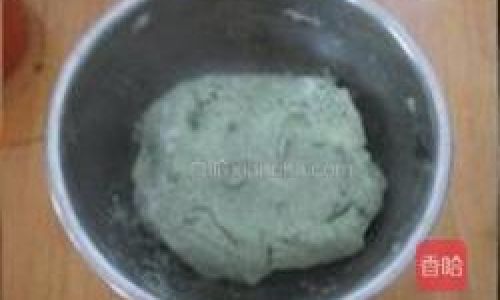
- Mugwort Substitutes: If unavailable, use spinach or matcha powder (adjust color and flavor accordingly).
- Dough Consistency: Too sticky? Add rice flour. Too dry? Dampen hands and knead.
- Storage: Refrigerate cooked Ai Bing for up to 3 days. Reheat in a steamer or microwave.
- Vegan Adaptation: Use coconut oil instead of butter in fillings.
Exploring Regional Variations
Ai Bing’s versatility shines through regional adaptations:
- Guangdong Style: Thinner dough filled with peanut-sugar mixtures.
- Zhejiang Style: Thicker cakes with sweet red bean paste.
- Modern Twists: Incorporate chocolate, purple sweet potato, or cheese fillings for contemporary flair.
The Cultural Tapestry of Ai Bing
Beyond the kitchen, Ai Bing embodies familial bonds and seasonal rituals. In rural China, communities still forage for mugwort together, sharing stories and laughter. The act of making Ai Bing becomes a meditation on patience and tradition, a small yet meaningful act of cultural preservation.
Conclusion
Homemade Ai Bing is more than a recipe—it’s a journey through time and taste. Whether you’re honoring ancestral customs or simply craving a unique dessert, this mugwort cake offers a rewarding culinary adventure. Experiment with fillings, invite loved ones to join the process, and savor each bite as a testament to the enduring power of tradition. As you shape your first batch, remember that every imperfection tells a story—one that connects you to generations past and future.
Final Thoughts
Mastering Ai Bing is a testament to the beauty of simplicity. With just a few ingredients and an open heart, you can transform humble mugwort into a dish that nourishes both body and soul. So, embrace the process, savor the results, and let the aroma of steamed Ai Bing fill your home with warmth and wonder. Your journey into Chinese culinary heritage starts here—one green, herbal bite at a time.


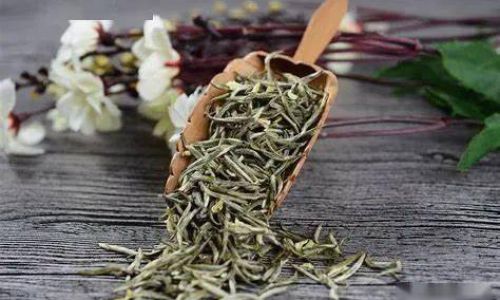
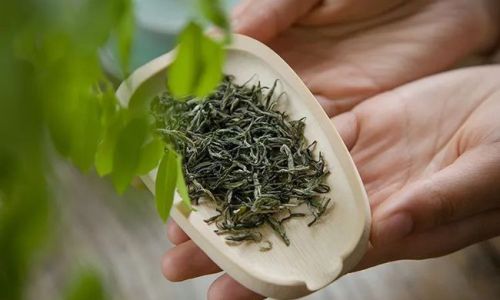
0 comments